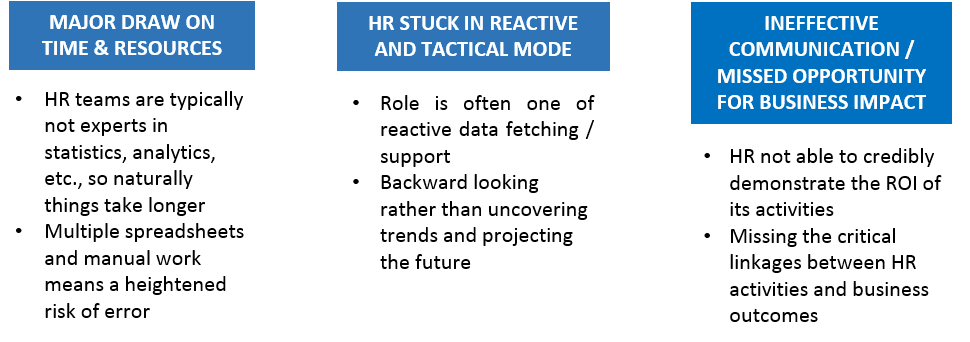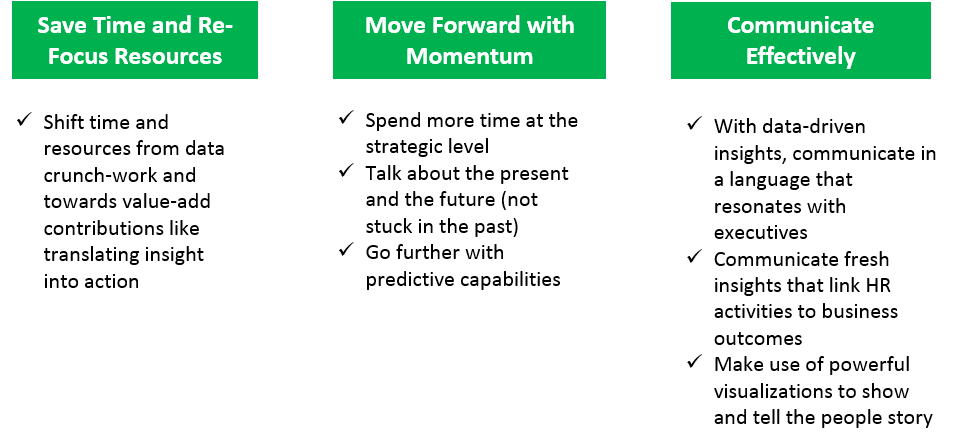3 HR Issues that Workforce Analytics Can Resolve
- Major Draw on Time and Resources
- HR Stuck in Reactive and Tactical Mode
- Ineffective Communication / Missed Opportunities for Business Impact
Getting to HR data insights
Does this sound familiar?
“We have lots of data but we’re challenged for time and resources to wade through it. And we need a solution to our spreadsheet addiction. Although we maintain spreadsheet upon spreadsheet, we have little means of drawing insight from them. Or connecting the data in meaningful ways.”
Or how about this?
“Data is not our problem, we’ve always had lots of data. Our challenge is in being able to draw insights from that data. Time and resource barriers exist. And issues arise because our data is spread across multiple, disconnected syststems.”
If either (or both) of these sound familiar you’re in good company. Both quotes came from conversations with VPs of Human Resources. Actually, we hear similar statements from HR Leaders all the time. They lament the wealth of information yet lack of HR data insights.
The universal challenge
This is such a ubiquitous issue, we call it the universal challenge. Because despite an abundance of HR data, connecting it across systems is difficult. And so is making sense of it to drive better business outcomes in HR. Consequently, unpacking the challenge further, we see why it’s one that needs solving – and fast!
Multiple and disconnected data sources limit the effectiveness and influence of HR in 3 major ways:

So if these are some of the problems…how do we tackle them? Workforce analytics provides a solid start at resolving them, for example:

Certainly workforce analytics isn’t a silver bullet, but the application of analytics to people data goes a long way in alleviating current limitations. And who wouldn’t like more time for their team, a more strategic outlook on the business, and a confident, credible voice to the executive?
Schedule a demo to learn more. So if these are some of the problems…how do we tackle them? Workforce analytics provides a solid start at resolving them, for example:
So if these are some of the problems…how do we tackle them? Workforce analytics provides a solid start at resolving them, for example:
 Certainly workforce analytics isn’t a silver bullet, but the application of analytics to people data goes a long way in alleviating current limitations. And who wouldn’t like more time for their team, a more strategic outlook on the business, and a confident, credible voice to the executive? Schedule a demo to learn more.
Certainly workforce analytics isn’t a silver bullet, but the application of analytics to people data goes a long way in alleviating current limitations. And who wouldn’t like more time for their team, a more strategic outlook on the business, and a confident, credible voice to the executive? Schedule a demo to learn more.